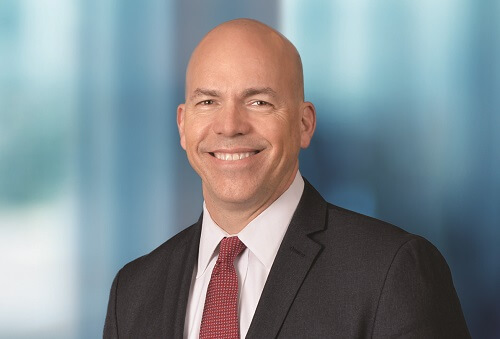Franklin Templeton Multi-Asset Solutions advisor gives his verdict on equities and why portfolios are too heavily tied to growth asset risk

No one can accuse Wylie Tollette of work-a-day approach to his craft. Quizzed on why investors have so much of their portfolio tied to growth assets, he revels in answering a question he said has dominated his thinking for the past 10-12 years.
Tollette, EVP, client portfolio solutions at Franklin Templeton Multi-Asset Solutions, is on his second spell at Franklin having been there for 18 years before a four-year stint as COIO at CalPERS, which he described as challenging but a “masterclass” in asset management.
The California-based advisor sat down with WP during a recent visit to Toronto to reflect on why, after 25 years of lower and lower interest rates, investors have had to compensate for lack of returns by using economic growth as their main portfolio driver.
While the return on a 10-year US government bond is now around 2%, the demands for 7-8% rate of return remain. Tollette said economic growth risk stretches beyond obvious exposure to the stock market and includes real estate; house prices for the individual investor and commercial properties for the institutional.
Tollette said: “Hotels, for example, collect that nightly room rate, which is turned into rental payment for the building. But as economic growth slows you probably couldn’t charge as much for the room. [Economic growth] is factored into so many assets and has powered its way into so many corners of people’s portfolios – even corners where people don’t think it resides.”
Many advisors are overweight equities but Tollette is cautious, with FT MAS's 7-10 year strategic outlook suggesting that stocks are above their long-term value. The concern is that this means they are likely to head downwards – and not via a painless, steady descent.
Those predicting a smooth ride over the next 12 months, he said, are expecting a “fair degree of perfection”, adding he believes there is a chance of a mild recession in the next 18 months. His team is more comfortable being underweight equities in the belief that caution will be rewarded when the downswings occur.
He said: “The typical way that I like to think of it is markets tend to climb like a feather on a breeze but tend to fall like a rock out of a window! This hasn’t happened for a while and, in addition to being above fair value for that 7-10-year horizon, we think that even in the relative short term, 12-month horizon, we think the stock markets have got a little bit over their skies.
“In the US, the markets anticipate some Federal Reserve rate cuts and a resolution of trade conflicts. In Canada, they are anticipating stability in the price of oil in a continued, relatively robust banking sector.
“Right now, markets are anticipating a fair degree of perfection in the outlook. We’ve been cautious for quite a while now on the 12-month outlook and, in our policy platform which is typically a 50-40-10 portfolio, we’ve recently scaled back to be 45-45-10. So, we are a little bit shy on the equity weighting.”
How, therefore, can an investor approach these times and avoid the economic growth risk that dominates many portfolios? Tollette points to Franklin’s time-tested approach of viewing asset classes on a continuum of two main drivers: inflation and growth. From that, the world of investing is dividing into quadrants where the manager attempts to calibrate what the next 10 years is going to look like.
The quadrant of moderate positive growth and low inflation is where we are at right now and have been for the past 10 years. Tollette explained: “Our view, based on our research, is we think there is a 55-60% probability that will continue over the next 10 years. In that scenario, stocks and corporate bonds will continue to do pretty well.”
A second quadrant of high inflation and moderate growth has a 10% probability and is a scenario where real assets do well and currency is something to avoid. Low growth and high inflation (10%) – akin to the “stagflation” of the 1970s – is “nasty” and only good for gold, while the final quadrant is the “Japan Syndrome” of low growth and low inflation (10%) and a situation where everyone should flock to government bonds.
Tollette said: “If you add up all these quadrants, you end up with something that looks like 60% stocks, 10% real assets, 15% Government bonds and 5-10% in something else. That’s what I would with my money!”
He added: “[In the short term], we believe there is value to be had in leaning in and leaning out a little bit. It’s a risk-managed way of tactically allocating and our goal is to add a bit more active return. We are an active shop in general.
“We now have passive strategies, ETFs here in Canada, but in general our goal is to add a little bit of alpha to the allocation mix and we are part of the firm that tries to do that.”
Follow WP on Facebook, LinkedIn and Twitter



